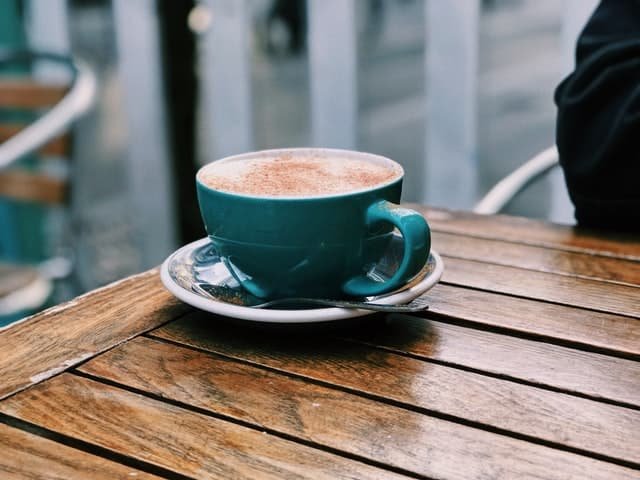
Caffeine is the most consumed psychoactive drug in the world, at least that is how our beloved Wikipedia describes it. Unlike other psychoactive substances, it is legal and unregulated in virtually the entire world.
Tea is, after water, the most consumed beverage in the world, coffee is the third. The two drinks are consumed daily by millions of people from all cultures and countries around the world.
One of the reasons why these two drinks are consumed is for their energizing effect, and this is due to a famous component present in both concoctions: caffeine, a natural stimulant present in some plants. Let’s learn more about this wonderful compound and see which tea has the most theine.
Does tea have caffeine?
Yes, caffeine is present in both tea and coffee. When talking about the caffeine in tea, the term theine is sometimes used, but it is the exact same compound.
However, the effects that caffeine produces change depending on how it is taken. In this way, drinking tea and drinking coffee do not produce the same sensation and this is due both to the concentration of caffeine and to its interaction with other plant chemical compounds.
Why tea activates but does not make you nervous
If you’re sensitive to caffeine, you’ve probably noticed that a cup of tea doesn’t make you as jittery as a cup of coffee. Have you ever wondered why?
Tea contains caffeine, but also theanine, an amino acid capable of producing a feeling of relaxation. Theanine is a psychoactive stimulant that reduces physical and mental tension. In combination with caffeine, it improves attention span and concentration, achieving a state of “calm alertness”.
It is believed that the caffeine in tea is absorbed more slowly, this makes the period of effect longer and at the same time smoother than with coffee.
Studies have also been carried out that suggest that it may have an important role in improving the immune response of our body. The study identified immunoglobulin levels 5 times higher in tea drinkers than in coffee drinkers.
Theanine is marketed by several manufacturers in the form of a drink, but we better take the most natural option and have a tea, don’t you think?
Coffee wins, but which tea has the most theine?
We have to start by saying that the only way to accurately identify the levels of caffeine in a coffee or tea is through analysis in a laboratory.
We already give you a headline. If you choose your beverage solely for its sleep-inducing potential, the choice is clear: drink coffee.
Generally speaking, an espresso coffee would contain about 80 milligrams of caffeine. A cup of black tea, considered one of the teas with the highest concentration of caffeine, on the other hand, would be around 50 mg. Taking into account that a standard cup of espresso coffee is 60 ml and a normal cup of tea usually holds about 200 ml, the difference is evident.
The theine ranking of teas
As we wrote at the beginning of the article, it is difficult to quantify caffeine simply by grouping teas into families.
Theine content of black tea
We can say that black tea is a tea high in theine. An 8-ounce cup would contain between 25 and 48 mg of theine. An intermediate figure of 32 mg for a 200 g cup.
Theine content of green tea
We can say that green tea is a low theine tea. A 237 ml cup would contain between 25 and 29 mg of theine.
Theine content of oolong tea
The amount of protein in oolong tea is highly variable. It should be remembered that this type of tea is very different from each other, with slightly oxidized oolongs, reminiscent of green teas, and highly oxidized ones, which are close to black. A 237 ml cup would contain between 10 and 60 mg of theine.
Theine content of chai tea
In this case, factors come into play, such as the fact that chai tea is based on a mixture of black tea and spices that is infused in water and milk. A low amount of theine at 21.6 mg per 8-ounce cup.
Theine content of red tea
The fermentation process that red tea goes through would not influence the amount of theine present. At least, that concluded this study, which established the theine concentration of pu ehr tea at around 22 mg of theine per cup of tea. We can say that red tea is a low theine tea.
Theine content of white tea
There are some sources of information that have analyzed the properties of white tea and established its theine concentration around 28 mg per 237 ml cup, putting it in the range of low theine teas.
Until now, scientific studies that have been carried out on large samples of different varieties of tea have not been able to establish a relationship between the variety of tea and its caffeine content. In a study, large differences in caffeine concentrations were found within the same group of teas. If you are interested, we leave them below everything, in the sources section.
How much caffeine is too much?
Caffeine is only toxic in large doses. To give you an idea, an adult should consume more than 10 grams in a day to reach the level of toxicity. A cup of coffee contains between 80 and 175 milligrams of caffeine, so it would be necessary to consume between 50 and 100 cups of coffee.
It is also interesting to remember that caffeine consumption is not recommended for pregnant or lactating women. The less the better, but the consumption limit is set at 200 mg per day.
Teas that are an alternative to caffeine
If you are looking for caffeine-free alternatives in the world of infusions, remember that the content of this exciting substance in rooibos and in the vast majority of what we would consider traditional infusions is exactly zero.
There are infusions, such as rosemary, which are ideal to start the day due to their energizing effects. Some consider it the European ginseng. If you are looking to activate yourself, the world of infusions can offer you alternatives to caffeine.
Factors that affect the level of caffeine in your tea
Both within tea and coffee, we can find varieties that respond to different preparation methods, ways of drinking the drink or characteristics of the leaves or berries that have been the origin of the preparation.
All these factors affect the amount of caffeine that the resulting preparation will have. Let’s review them.
- Amount – Okay, this is pretty off the charts, the amount of coffee or tea leaves you use in your brew determines the level of caffeine. In the case of teas, mixing them with other plants for infusions will reduce their caffeine level. Flavored teas that do not involve reducing the volume of tea in the blend will have the same levels of caffeine.
- Infusion time: this applies mainly to teas. Letting the tea leaves infuse longer will cause the concentration of caffeine to increase.
- Water temperature: Hot liquid will cause more caffeine to be extracted from the coffee or tea.
- Tea leaf roasting: more roasting, less caffeine.
- The horticultural variety of plants: tea or coffee plants have been selected over time looking for the most productive and resistant varieties. This has also influenced the levels of caffeine that its leaves and fruits have. Remember that all teas are produced from the same plant, Camellia Sinensis. Thus, two black teas produced from different varieties may have significant differences in their caffeine content.
- The type of leaves: tea can be produced from various kinds of Camellia Sinensis leaves, in fact it is one of the characteristics that are usually taken into account to establish its quality. The most tender shoots contain a higher composition of caffeine, since they use it as a defense mechanism against insects, to which they are more exposed.
- Coffee preparation method: in the case of coffee, it can be prepared by percolation (the typical Italian coffee machines), by drip (filter coffee machines) or by machine (espresso). This affects the level of caffeine, which is higher in espressos.
Finally, you should know that caffeine affects each person differently. Sex, body mass, metabolism and some hereditary factors mean that, as with alcohol, there are people who are more and less resistant to caffeine.
Why do plants produce caffeine?

Caffeine is the product of millions of years of evolution in the plant world.
The enzymes responsible for the creation of caffeine are found in all plants, they belong to a group called N-methyltransferases and are responsible for creating a large number of different compounds. Some to defend themselves, others, as we see, beneficial for the animals that consume them.
When the leaves of the coffee plant fall to the ground, they contaminate it with their caffeine. This makes it difficult for other competing plants to germinate in it.
Coffee plants use caffeine to get rid of predatory insects. In high concentrations, caffeine is toxic to insects, which is precisely why they have developed ways to detect it.
Plants produce nectar to attract animals to spread their pollen. When insects feed on nectar containing caffeine, it affects them in a beneficial way by stimulating them and giving them energy. This makes the insect remember that plant in a positive way, tend to return and, therefore, contribute more to pollinate the plant.
In this way, plants use caffeine as a weapon to defend themselves but also as a seduction mechanism. They are the two faces of a magical chemical compound.
